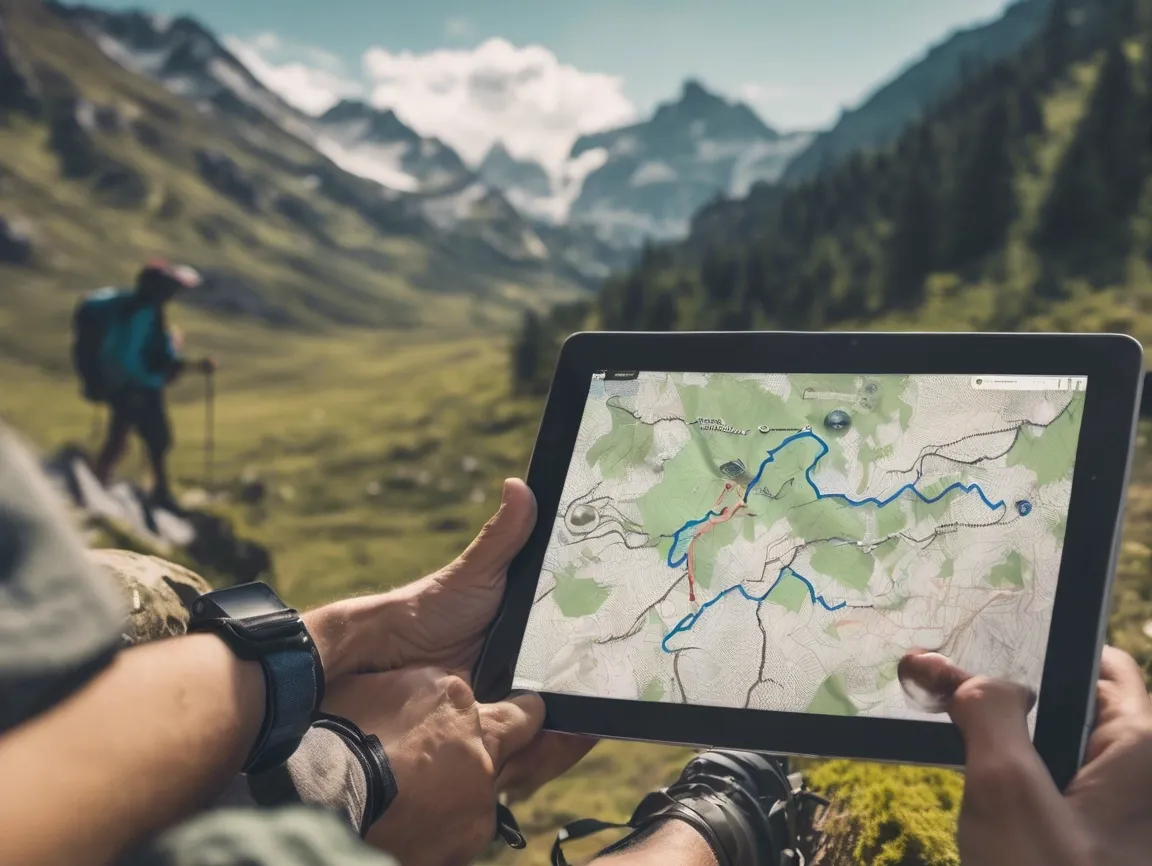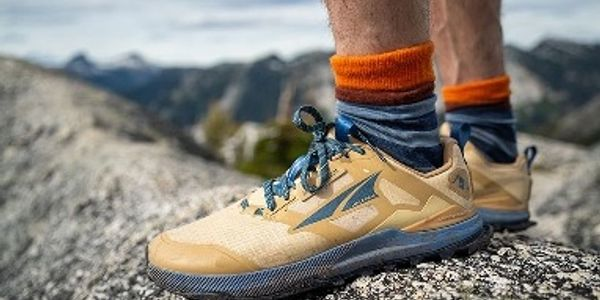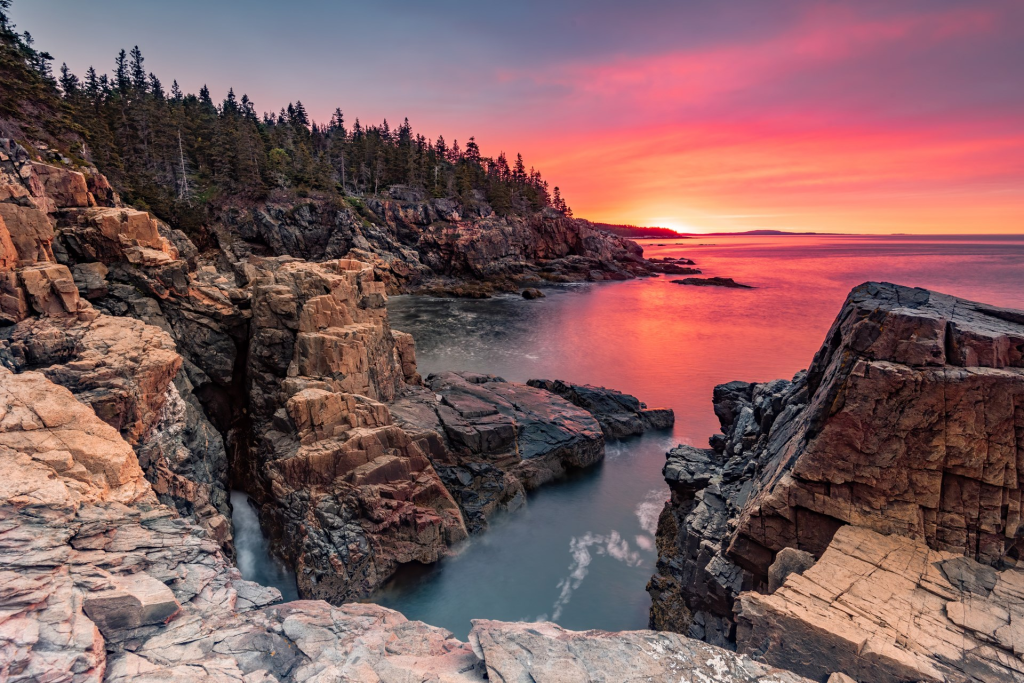AI Trip Planning: A Hiker’s Practical Guide to Planning Faster
By Cap Puckhaber, Reno, Nevada
Gemini and Perplexity AI are revolutionizing how to plan a backpacking trip. As a long-time hiker, I’ll share how this AI hiking route planner technology is a massive shift from my old methods. Consequently, this guide will give you actionable steps to make your next outdoor adventure planning session faster, smarter, and safer. Let’s get into it.
The Grind of Traditional Trip Planning
For years, my backpacking trip planner process looked like a command center for a space launch. I’d have no fewer than ten browser tabs open at once. My entire goal was to solve for four critical variables before my boots ever touched the dirt: reliable water resources, sustainable daily elevation gain, viable camping spots, and overall resource management.
On one screen, I’d have GAIA GPS running, meticulously tracing my potential route. On another, I’d have onX Hunt open, because its land ownership and water source layers are incredibly detailed for finding reliable water. Then, of course, there was Google Maps and its satellite view to check for tree cover at a potential campsite.
I would spend hours, and I mean hours, cross-referencing information. For instance, I would read a dozen trip reports on various forums to see if a certain spring was flowing in late August. After that, I would manually plot out the elevation profile to make sure the daily gain was manageable. It was a labor of love, for sure, but also a significant time sink. This manual process was the only way to ensure I had a solid plan for my backcountry navigation and safety.
What is an AI Hiking Route Planner?
Now, this new trend of using an AI hiking route planner has completely changed the game. Instead of you hunting for the information, the AI brings the information to you. It works by analyzing what I call the trail’s “weak points.” These are the spots that cause the most stress during planning, especially for beginner backpacking tips. Specifically, I’m talking about the longest stretch without water, the section with the most exposure, or the climb that will absolutely wreck your legs on day three.
Think of it like this: an AI travel planner is like having a conversation with a super-computer. This computer has instantly read every map, guidebook, and blog post about your trail. You can just ask it plain English questions about camping spots or resources. In short, it’s not just a map; it’s a knowledgeable digital guide. This approach is making thru-hiking preparation more accessible than ever before.
How AI Synthesizes Trail Data
You might be wondering how a chatbot can know so much about planning a trip. The magic is in the technology, specifically Large Language Models or LLMs. These are the brains behind AI tools like Google’s Gemini, Anthropic’s Claude, and Perplexity AI. Developers train them on a massive amount of text and data from the internet. When you ask about finding water resources, the AI synthesizes information from countless trail reports, maps, and weather data. It then provides a single, coherent answer.
Each tool has its strengths. For example, Perplexity AI is fantastic for research because it provides citations for its answers. This feature is perfect for verifying permit information or ranger station hours. Gemini and Claude, on the other hand, excel at more creative tasks. These include brainstorming an entire itinerary from scratch or rewriting a route plan to be less strenuous.
A Monumental Shift: The 70% Time-Saving Method
The efficiency gain here isn’t small. Indeed, we’re talking about a monumental shift in time management. Based on my own planning for a recent 5-day trip, I estimate that using an AI trip planning assistant cut my active research time by about 70%. What used to take me a full weekend day now takes a couple of focused hours.
The chart above breaks down my typical time investment for a multi-day trip. You can see how AI assistance dramatically reduces the time spent on data collection tasks. This includes finding water or suitable camping spots. Consequently, this frees up more time to focus on other important things. You can now check your ultralight backpacking gear or physically train for the hike’s elevation gain.
This efficiency is why the market for generative AI is exploding. According to a report from Grand View Research, the market is projected to grow from $40 billion in 2022 to over $1.3 trillion by 2032. That’s a massive expansion, and its effects are reaching every corner of our lives, including outdoor recreation.
Practical Guide: Using AI to Plan a Sierra Trip
Let’s make this practical. Imagine we are planning a 3-day trip in the Sierra Nevada, a classic California destination. This is a perfect example of national park trip planning. I want to find a good loop trail that has a challenging but manageable elevation profile.
Here are the exact prompts I would use with an AI assistant like Gemini:
“I’m looking for a 3-day, 2-night backpacking loop trail near Bishop, California, that is between 20-25 miles long. I am a beginner hiker, so please avoid anything with class 3 scrambling. My main priorities are finding established camping spots with reliable nearby water resources.”
“Based on that recommendation, can you create a sample itinerary? Please calculate the daily mileage and total elevation gain for each day. Mark potential camping spots on a hypothetical map.”
“What are the biggest resource challenges for this route in late August? Specifically, identify the longest water carry in miles and list the key gear resources needed to handle the terrain and altitude.”
With just three prompts, I’ve accomplished what used to take me hours of research. The AI will give me a trail name, a day-by-day plan, and a list of the key difficulties. This is the core of smart AI for outdoor recreation.
Lowering the Barrier to Entry for All Hikers
This trend is more than just a cool new piece of hiking safety technology. It represents a fundamental lowering of the barrier to entry for backpacking and camping. The overwhelming nature of planning is a huge reason many people never get out on their first multi-day trip. They get stuck trying to figure out details about water, elevation, or resources.
This technology helps solve that problem. As discussed in Backpacker Magazine, technology, when used responsibly, can enhance safety and accessibility in the outdoors. By making the planning phase less intimidating, AI empowers more people to experience the backcountry. From my marketing perspective, this is a huge opportunity. We can grow the community of outdoor enthusiasts and advocates for public lands. When people feel confident, they are more likely to act.
A Critical Warning: AI is a Tool, Not a Replacement
Now, I have to be honest. A small, old-school part of me feels a little bit conflicted. Is it possible to know too much? Part of the adventure of the backcountry is the unknown. It’s learning to read a map, use a compass, and make smart decisions when a water source you counted on is unexpectedly dry.
Therefore, we can’t let AI become a crutch. It’s a powerful tool for planning, but it’s not a substitute for developing real outdoor skills and judgment. Always have a backup plan. You must always carry a physical map and know how to use it. Furthermore, upholding Leave No Trace principles and having situational awareness are skills that no AI can teach you on the trail. This technology should supplement your knowledge, not replace it.
How to Start Using AI for Your Next Adventure
Ready to give it a try for your next adventure? It’s easy to get started.
Here are a few starter prompts you can use with tools like Claude or Perplexity AI for your next trip:
Example Prompts for Trails, Logistics, and Safety
- For finding a trail: “Suggest three beginner-friendly weekend backpacking trips within a 3-hour drive of Reno, Nevada. For each, list the primary water resources, expected elevation gain, and availability of camping spots.”
- For logistics: “I’m planning to hike the Wonderland Trail. Can you provide a list of the common resupply points and their typical open dates? Use your sources for this information.” (This is a great prompt for Perplexity).
- For safety: “What are the primary wildlife concerns in Yosemite National Park in June, and what are the recommended safety protocols for bear encounters and food storage?”
Use the AI’s answers as your starting point. After that, dive into your maps and other resources to confirm the details. Treat the AI as your incredibly knowledgeable research assistant. Ultimately, it will handle the heavy lifting, leaving you with more time to get excited about the journey ahead. It’s a new era for outdoor adventure planning, and that’s my latest update for the Cap Puckhaber hiking blog. I’m excited to see where this technology takes us.
Frequently Asked Questions (FAQ)
Q: Is it safe to rely only on an AI for my hiking trip plan?
A: Absolutely not. You should treat an AI planner as an incredibly smart research assistant, not as a replacement for your own judgment and essential skills. Always cross-reference the AI’s suggestions with official sources like ranger station websites, recent trip reports, and, most importantly, a physical map. Technology can fail, but a map and compass, combined with your knowledge, are your most reliable tools in the backcountry.
Q: What are the best AI tools for hiking planning?
A: Many great tools are emerging, but a few stand out for specific tasks. Perplexity AI is excellent for research that requires citations, such as checking permit deadlines or resupply point operating hours. Google’s Gemini and Anthropic’s Claude are fantastic for more creative, generative tasks. For instance, you can ask them to “create a 3-day beginner itinerary” or “rewrite this packing list for ultralight standards.”
Q: How much do these AI trip planners cost?
A: Most of the top-tier AI tools (like the ones mentioned above) offer powerful, free versions that are more than capable of handling all your trip planning needs. They also offer premium, paid subscriptions. These paid versions typically give you access to their most advanced models, faster response times, and more daily uses. However, for planning a few backpacking trips, the free versions are an incredibly powerful starting point.
Q: Can AI help me with Leave No Trace principles?
A: Yes, this is one of its best uses. AI is a fantastic tool for learning how to minimize your impact. You can ask it specific questions, and it will synthesize the seven Leave No Trace principles into actionable advice for your specific trip.
Try this prompt: “I am planning a trip to the Sierra Nevada. What are the specific Leave No Trace principles I need to follow regarding food storage, human waste, and campfire regulations for this area?”
Q: What’s the difference between an AI planner and a GPS app like GAIA?
A: This is a key distinction. A GPS app like GAIA GPS or onX is a navigation tool. It shows you where you are on a map, tracks your route, and displays data layers (like land ownership or water sources).
An AI planner is a research and synthesis tool. It doesn’t track you in real-time. Instead, it helps you create the plan before you go. You use the AI to decide where to go, find potential campsites, and identify risks. Then, you plug that plan into your GPS app.
About the author
Cap Puckhaber is a marketing strategist, finance writer, and outdoor enthusiast. He writes across CapPuckhaber.com, TheHikingAdventures.com, SimpleFinanceBlog.com, and BlackDiamondMarketingSolutions.com. Follow him for honest, real-world advice backed by 20+ years of experience.
National Park Reservation System Explained
6 Ways to Make It Your Best Year of Hiking
The Outdoor Enthusiast’s Guide to Stargazing

Join our Mailing List
Sign up with us now and be the first one to know about our exclusive offers and product updates.
By submitting your information, you`re giving us permission to email you. You may unsubscribe at any time.
Follow Cap Puckhaber on Social Media


About the Author: Cap Puckhaber
Backpacker, Marketer, Investor, Blogger, Husband, Dog-Dad, Golfer, Snowboarder
Cap Puckhaber is a marketing strategist, finance writer, and outdoor enthusiast from Reno, Nevada. He writes across CapPuckhaber.com, TheHikingAdventures.com, SimpleFinanceBlog.com, and BlackDiamondMarketingSolutions.com.
Follow him for honest, real-world advice backed by 20+ years of experience.





